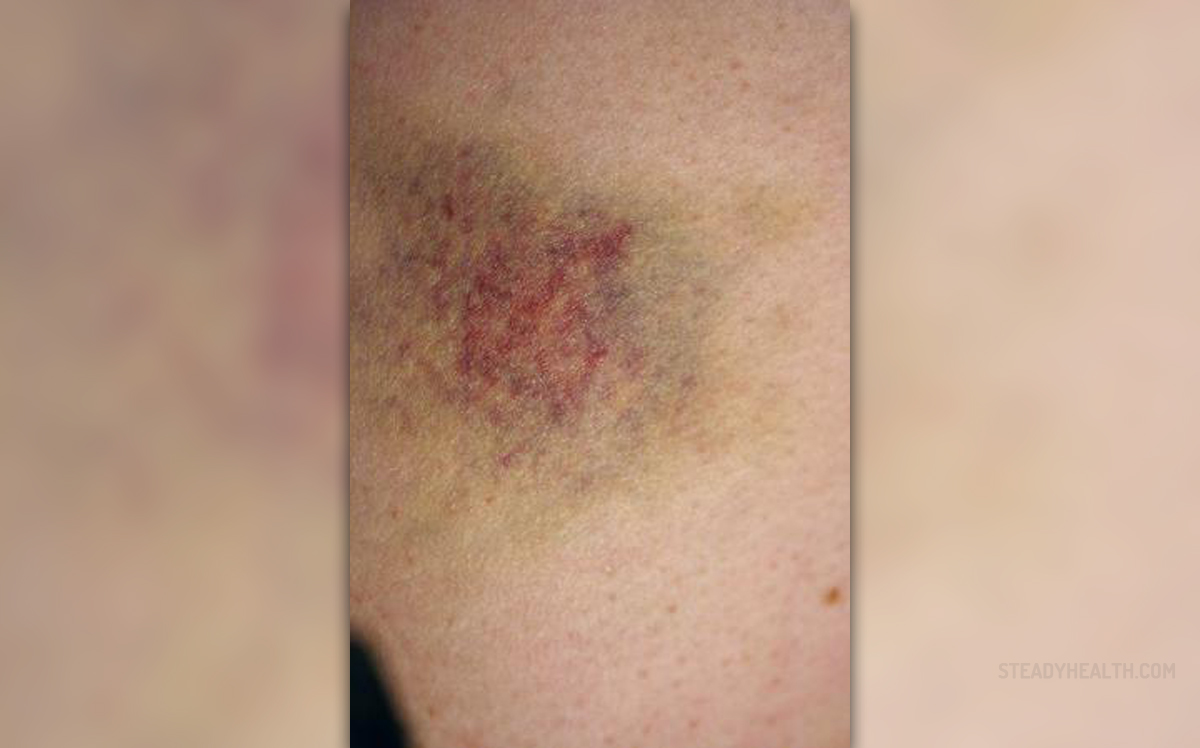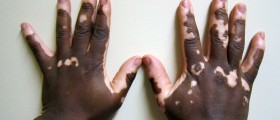Skin Discoloration
The normal color of the skin is obtained by the presence of a specific pigment called melanin, located in melanocytes, specific skin cells. The amount of melanin determines the basic color of the skin.
Skin discoloration refers to any change of color that affects skin. It is usually partially affecting certain parts of the skin. But in certain medical conditions, even the entire skin may change color. There are numerous causes of skin discoloration.
Causes of Skin Discoloration
Skin discoloration is typical for skin diseases. Apart from that, it commonly occurs after injury and may be caused by diseases of other organs.
Skin diseases are always accompanied by specific skin changes and skin discoloration. The very appearance of skin discoloration may help in the setting of the diagnosis.

Injuries of the skin are definitely the most frequent cause of skin discoloration. Initially, the injured part is red due to increased blood supply. The redness eventually withdraws, but in the case of bruises, the skin discoloration turns from red to purple, and as the injury heals, the affected area becomes green and yellow, and it finally restores its normal color. Redness of the skin is also typical for skin infections and allergic reactions. Skin can even become red during physical activity and sport and this is considered a normal reaction of the skin.
Furthermore, skin discoloration can be induced by illnesses of other organs. Jaundice, for example, is a condition in which the entire skin as well as visible mucous membranes become yellow. Skin discoloration is in jaundice caused by improper functioning of the liver. It affects people suffering from many liver diseases, such as hepatitis, cirrhosis, etc.
Cyanosis is blue and bluish discoloration of the skin. The skin becomes cyanotic because the blood does not contain a sufficient amount of oxygen which consequently leads to an insufficient amount of oxygen in the skin. Cyanosis can be peripheral and central and occurs in a variety of medical conditions. Some of them include vascular diseases, heart conditions, asthma, and emphysema.
Pallor of the skin is another form of skin discoloration. Extremely white skin can point to an insufficient blood supply in the affected area. If it affects the entire body, it can be caused by anemia. Partial pallor can occur in frostbite, shock, burns, allergies, and ulcers.
Carotenodermia is a medical condition that features with orange color of the skin. It occurs due to increased accumulation of carotenoids in the skin. Carotenodermia can be found in people who eat too much food rich in carotenoids. On the other hand, it may also point to improper liver or kidney function.
- Unexpectedly, 125 genes can influence skin tone. The production of melanin is governed by genes and hormones. A person has control over his or her skin’s ability to function and live, as well as how much pheomelanin or eumelanin they produce by, for instance, deciding how much sun exposure they receive, or the amount of drugs and cosmetics they use. These elements could alter the tone of skin over time.
- Sun exposure is a common cause of skin pigmentation. The body produces more melanin, in order to defend itself against UV rays from the sun. This may make the skin more pigmented, to shield it from the sun’s rays.
- Several medications may also lighten the skin’s pigment. One class of drugs, antibiotics, can boost melanin synthesis, increasing skin color. When certain medications, such as birth control pills, are taken together, skin pigmentation may also intensify. A person taking medicine should speak with their doctor to find out if the medication could impact the color of their skin.
- While they are ill, a person’s skin tone may alter, becoming lighter (hypopigmentation), or darker (hyperpigmentation). Melanin, the pigment that regulates skin color, is produced less frequently by the body, which results in hypopigmentation. Hyperpigmentation, on the other hand, is an increase in melanin synthesis.
- Despite being well-recognized for many years, drugs for skin pigmentation have only recently become more widely available. Topical creams and oral pills are the primary medications for skin pigmentation. It would be best to balance the advantages and disadvantages of both medicines to choose which is most beneficial.
- Vitamins A, B, C, and E can all be used to address skin pigmentation problems, and are necessary for healthy skin. Each vitamin, which can be obtained from foods or supplements, has specific advantages.

















Your thoughts on this
Loading...